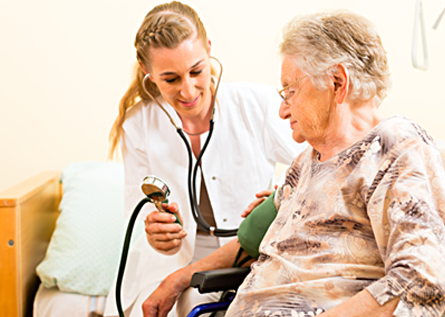HOUSES FOR ELDERLY

Homes for the elderly are residential structures that welcome people (self-sufficient or not) unable to live alone or receive home care. On the national territory there are different types of homes for the elderly, whose services and levels of assistance vary according to the level of self-sufficiency of the person. We have already made a first distinction between some types of homes for the elderly, in this regard see this link (insert link services for nursing homes, rsa, day care centers).
However, there are different types of homes or residences for the elderly, which offer different types of services and assistance and which have a different nomenclature based on the types of residential and care services available.
In this sense we distinguish the following types of structures: nursing home, hotel house, family home, sheltered house, day center, housing community, nursing home assistance (Rsa) and social residence assisted. The retirement home, also known as a living room or holiday home for the elderly, is a private facility that accommodates partially self-sufficient people in apartment style rooms or suites. This facility also offers health care. The hotel house is a private facility that welcomes only self-sufficient elderly people in self-contained apartments. This type of home for the elderly also offers a health care service.
The family home is a structure that can be private or conventioned. Inside, old lonely people are accommodated who share family-style rooms, with toilets, kitchen, living room and bedroom. In the family homes only an outpatient health service is provided. The protected house, privately managed or affiliated, welcomes only non self-sufficient elderly people in hotel-type rooms. This facility also offers general health care with rehabilitation service. The day center, with public, private or conventioned management, welcomes seniors with different degrees of self-sufficiency or social hardship. The reception in day care centers is only daily and provides a health care service aimed at developing the autonomy of the elderly person. The housing community, with public or private management, hosts from seven to twelve elderly people who are partially self-sufficient and with hotel-type accommodation. These facilities offer a health care service with a rehabilitation program. The healthcare residence (Rsa), with public management, private or conventioned, welcomes only non self-sufficient elderly people offering medical-health assistance with rehabilitation services.
The type of accommodation in the RSA can be variable depending on the case and the people to be accommodated. In fact, there are Rsa with hospital-type accommodation and others with rest-type accommodation. The assisted social housing, private or contracted, welcomes over 65 still self-sufficient. This property offers basic health care and hotel-type accommodation. The choice of the type of home for the elderly therefore depends on the clinical and social conditions of the elderly person, age and degree of self-sufficiency. Often, the choice of retirement home is necessary for elderly people alone or without children or who have no one able to take care of them. However, staying in senior citizens' homes can only be temporary.
In this sense it is also referred to as a shelter for relief, or a transfer to the RSA or the sheltered home for a short period of time and to offer support to those who assist elderly people who are not self-sufficient and disabled at home. The admission of relief can also be activated with the support of Pharmamedic and can be useful when emergencies occur in the household, such as the sudden absence of the reference family member or the private assistant. The aforesaid hospitalization presents the character of temporariness, with the return home after the prescribed period of hospitalization. For the first 30 days of hospitalization there will also be economic benefits on the fee charged to the citizen.
Requirements for access to public and private nursing homes must be discussed with the social worker in your area of residence. It is also important to remember that the straight line of private residential structures is fully borne by the citizen, that of public structures, on the other hand, is or should be borne by the State, while the fee for the affiliated structures is partly borne by the citizen and partly charged to the state. Often, the request for admission to the sheltered house or the RSA is prescribed by the doctors of the hospital where the elderly person was admitted or by the family doctor who treated the patient.

